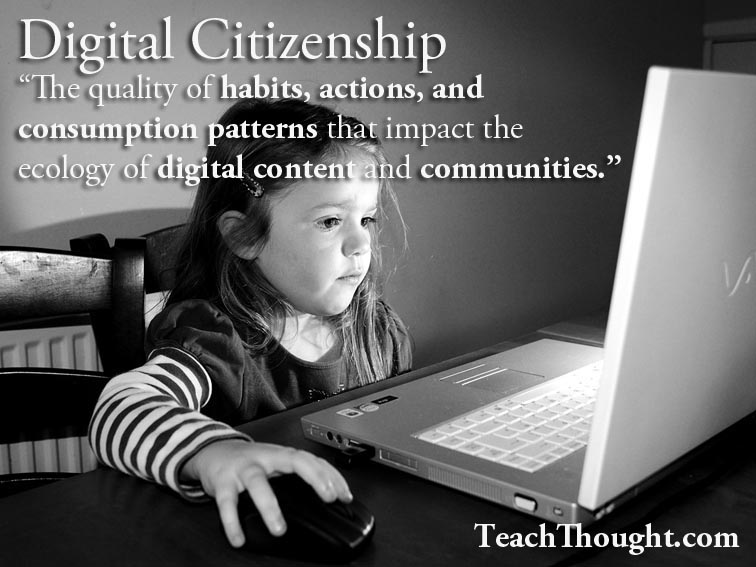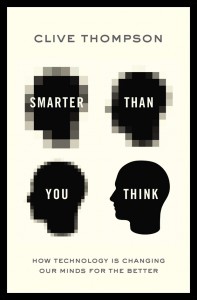Even though in my last post I talked about how the learning process of being involved in Cohort 21 was enough, I’m going to be using some of what I learn though my Cohort readings and endeavours to support a project I must undertake over the course of this year as part of the Folio Collaborative. After delving into some articles that were shared by the folks I follow on Twitter and on Diigo, and attending Clive Thompson‘s talk the week after our first Cohort Face to Face where he touched on a couple of things that have been on my mind for a while, I’ve really been thinking about the whole “digital native” concept and about how to teach digital citizenship. I attended a talk at Social Media Week Toronto 2013 called The Digital Classroom where one of the panellists suggested that the old “technology” class is obsolete and that technology should be integrated into all subjects. I couldn’t agree more. Here are some of the tweets I sent after Clive’s talk (ironically there was no cell phone service in the room he presented in!)
#styt Students need digital tools taught to them so they can use them correctly and thoughtfully @pomeranian99 , SO important!
— Mardi Michels (@MardiMichels) October 23, 2013
#styt @pomeranian99 believes digital citizenship need to be the next big thing taught in schools, not going to happen on its own.
— Mardi Michels (@MardiMichels) October 23, 2013
then this I saw on the very same evening fly by in my Twitter stream…
Q1: Digital citizenship is about schools providing students with skills that will serve them long after they've left the classroom. #hcspdl
— Sean Junkins (@sjunkins) October 24, 2013
In my teaching environment, we are surrounded by #AlltheTechnology – we’re very fortunate for sure. However, I don’t feel we always take advantage of small, yet important “teachable moments” that happen each and every day to help our students function responsibly and confidently in the online world. Now I’m not talking a huge project or writing a whole curriculum, by any means.
An example that really helped me make a firm decision on this – I happened to be walking by a small group of boys working on presentations on their laptops a couple of weeks ago. I stopped, as I tend to do, to take a look at what they were up to. They were looking for photos to use and I noticed they were just pulling photos willy nilly from the Internet – with no regard for where they were coming from or if they were copyright or not. Now I know that in a school environment, their work won’t be public, and they certainly won’t be making any money so it’s not like they are using someone else’s hard work for a profit. But watching them and realising that they probably just think that because it’s on the Internet then it’s free, made me think that there are certainly a few areas where even very small changes can make a huge difference. And it’s not about changing what they are doing, but how, and also how they think about it.
With that in mind, I’ve decided to take on a small project where I’ll do some reading about digital citizenship over the course of the year and turn that reading into a short presentation (perhaps a digital poster/ infographic?) to present to my Grades 3-6 colleagues at the end of the year. I’ll aim to give them information like this:
Searching Flickr for free images to use in a classroom setting
The basics of copyright and Creative Commons
Instructions for using Creative Commons images in blog posts
As someone who spent years running teacher training courses and someone who attends conferences on a regular basis (on both education and food blogging), I am very aware of the need for “quick bite-sized takeaways” for busy teachers. Technology should really make our lives easier, not more complicated (but that’s not always the case as we all know!) and I hope my reading and research over the year will help my colleagues teach our boys to use technology effectively and respectfully. I loved this infographic attempting to define the concept of digital citizenship and may print this out for myself!
Now… about that research question…. As they say en français, à suivre….
Got some spare time? I’m really enjoying Clive Thompson’s Smarter than you Think: How Technology is Changing our Minds for the Better.
Buy it on Amazon or Amazon Canada. Or for free worldwide shipping, buy from The Book Depository.
(Disclosure: affiliate links: I make a few cents if you purchase something after clicking through)



